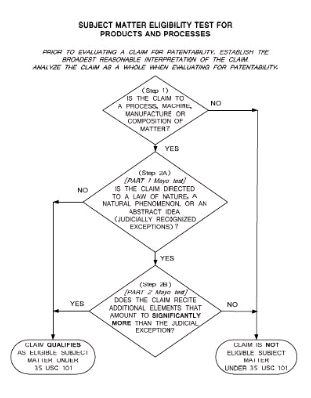
The U.S. Patent and Trademark Office ("USPTO") has renewed the hopes of applicants looking to patent method of treatment claims. A recent memo from the USPTO (the "Memo") provides guidance on method of treatment claims, suggesting that when correctly drafted, such claims should generally be considered patent eligible subject matter.
The Memo comes in direct response to the Federal Circuit's decision in Vanda v. West-Ward, issued on April 13, 2018. In Vanda, the Court, inter alia, distinguished certain method of treatment claims as patent eligible from those deemed ineligible by the Supreme Court in the infamous Mayo decision in 2012. The Court in Vanda found that the method of treatment claims at issue passed the first prong of the Mayo test, i.e., they were not directed to patent ineligible subject matter, and thus the claims did not need to be analyzed for an inventive concept under the second prong. To support its decision, the Vanda panel highlighted the specificity of the claims at issue:
At bottom, the claims here are directed to a specific method of treatment for specific patients using a specific compound at specific doses to achieve a specific outcome. They are different from Mayo. They recite more than the natural relationship between CYP2D6 metabolizer genotype and the risk of QTc prolongation. Instead, they recite a method of treating patients based on this relationship that makes iloperidone safer by lowering the risk of QTc prolongation. Accordingly, the claims are patent eligible.
For the reader's convenience, an illustration from the USPTO on the Mayo test is reproduced to the left and a side-by-side comparison of the claim terms in Vanda and Mayo is set forth in the table below.
In analyzing the Vanda decision, the memo highlights three points:
- First, claims should be evaluated as a whole. Thus, a claim should not be deemed patent ineligible simply because a claim requires a conventional step.
- Second, patent eligible claims apply a natural relationship rather than claim such a relationship. For example, the claims in Mayo were deemed to be "directed to" the natural relationships of how the body interacts with certain drugs – "[a] method of optimizing therapeutic efficacy" – while the claims in Vanda apply a natural relationship through specific actions to treat a specific disease – "[a] method for treating a patient with iloperidone, [for treating] schizophrenia" and lowering adverse risks of such treatment.
- Third, if a method of treatment claim is patent eligible under the first prong, of the Mayo test, the Court should not further proceed to the second prong of the Mayo test, i.e., analyzing the claims for something "more," also known as the illusive "inventive concept.".
With respect to the second point above, the Memo further explained that correctly drafted claims claim the application of a natural relationship rather than being directed to The Memo highlighted the order of the "primary steps" of "determining" the natural relationship then "administering" a specific quantity to "treat a particular disease." A rule of thumb thus could be whether the following can be stated after reading a method of treatment claim: "The claim is directed to a method of using _______ [drug] to treat _______ [condition] comprising the following steps . . ."
The claims in Mayo, however, administered a drug and then analyzed the body's natural reaction in order to provide advice on whether to increase or decrease dosage. In contrast, the claims in Vanda first determined the body's natural reaction to a drug, then administered the drug in a specific dosage range to treat a particular disease.
While the Memo and the Vanda case signal good news for patentees, there is still a chance, as there always is with the Federal Circuit and the Supreme Court, that future decision may change these interpretations yet again. The Vanda decision was not unanimous. Chief Judge Prost of the Federal Circuit dissenting in Vanda believes that the claims were merely "drafting efforts designed to monopolize the law of nature itself." According to Chief Judge Prost, "[t]he fact that a reduction of iloperidone dosage in poor metabolizers to the [sic] may reduce QTc prolongation is both the means and the ends of this claim.." A petition for rehearing en banc is currently pending before the Federal Circuit; a Supreme Court petition will likely follow.
|
Mayo: US Patent 6,355,623 |
Vanda: US Patent 8,586,610 |
|
1. A method of optimizing therapeutic efficacy for treatment of an immune-mediated gastrointestinal disorder, comprising: (a) administering a drug providing 6-thioguanine to a subject having said immune-mediated gastrointestinal disorder; and (b) determining the level of 6-thioguanine in said subject having said immune-mediated gastrointestinal disorder, wherein the level of 6-thioguanine less than about 230 pmol per 8×108 red blood cells indicates a need to increase the amount of said drug subsequently administered to said subject and wherein the level of 6-thioguanine greater than about 400 pmol per 8×108 red blood cells indicates a need to decrease the amount of said drug subsequently administered to said subject. |
1. A method for treating a patient with iloperidone, wherein the patient is suffering from schizophrenia, the method comprising the steps of: determining whether the patient is a CYP2D6 poor metabolizer by: obtaining or having obtained a biological sample from the patient; and performing or having performed a genotyping assay on the biological sample to determine if the patient has a CYP2D6 poor metabolizer genotype; and if the patient has a CYP2D6 poor metabolizer genotype, then internally administering iloperidone to the patient in an amount of 12 mg/day or less, and if the patient does not have a CYP2D6 poor metabolizer genotype, then internally administering iloperidone to the patient in an amount that is greater than 12 mg/day, up to 24 mg/day, wherein a risk of QTc prolongation for a patient having a CYP2D6 poor metabolizer genotype is lower following the internal administration of 12 mg/day or less than it would be if the iloperidone were administered in an amount of greater than 12 mg/day, up to 24 mg/day. |
The content of this article is intended to provide a general guide to the subject matter. Specialist advice should be sought about your specific circumstances.



